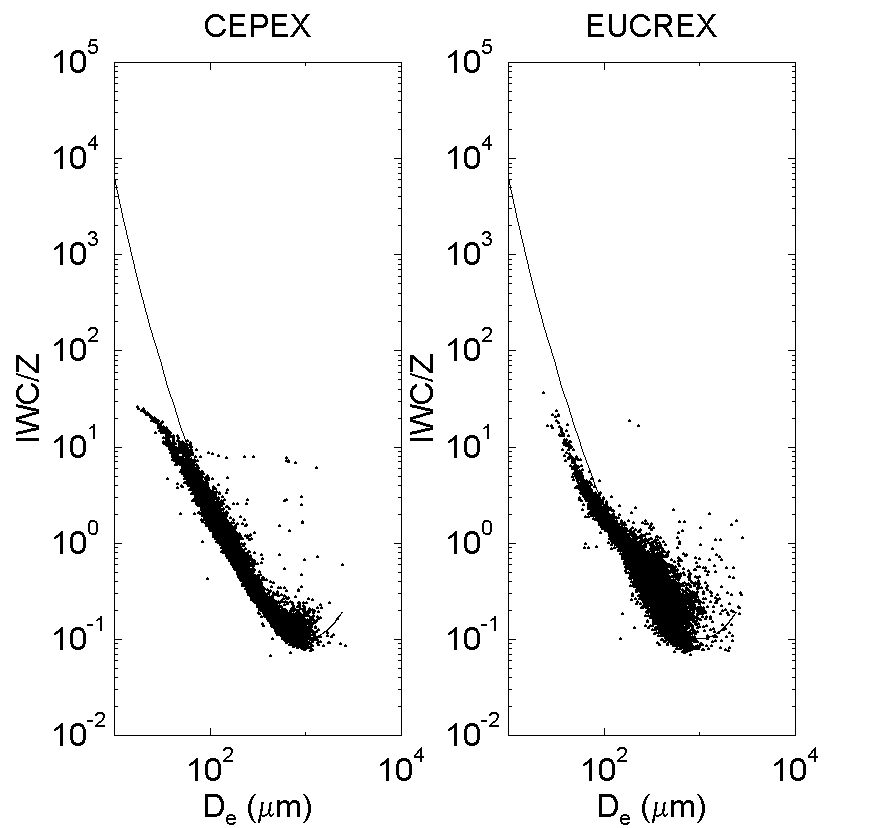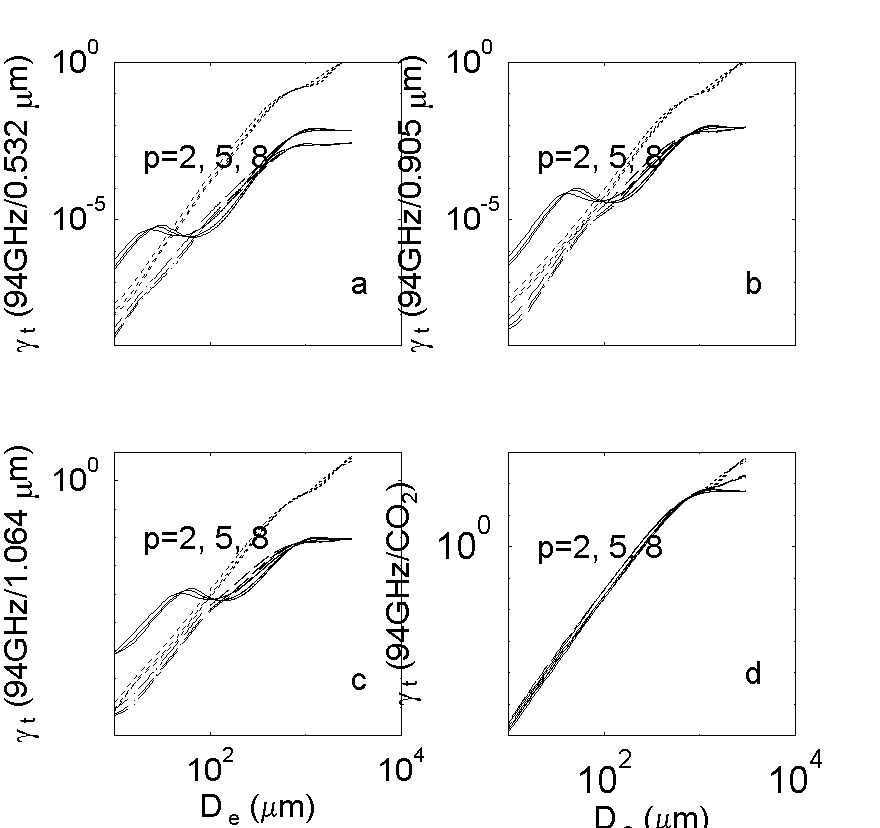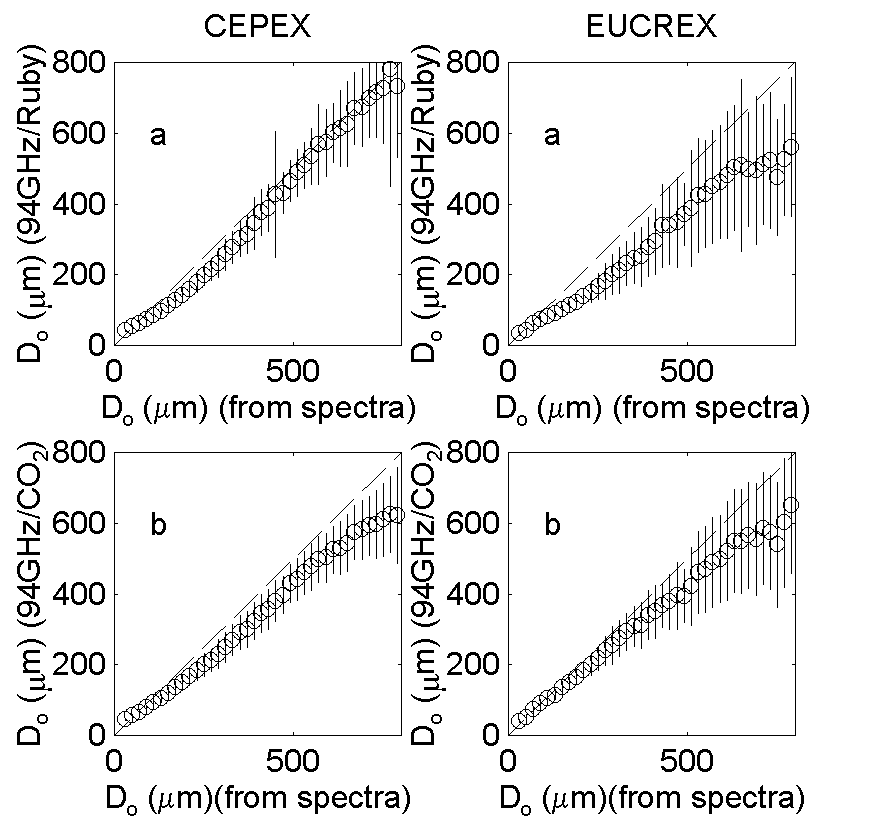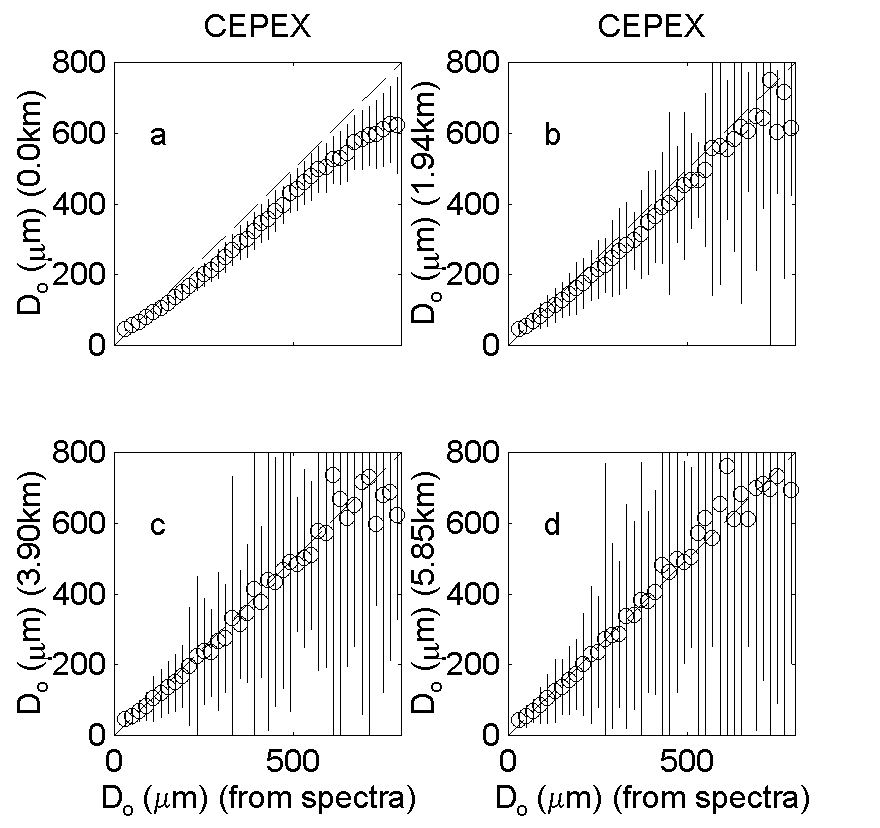











Last update
5 Apr 2001

This page is maintained by
Mark Fielding
All content Copyright © The University of Reading unless otherwise stated.
Cirrus particle sizing using a spaceborne radar and lidar
Chun-Lei Liu and Anthony IllingworthIntroduction
Cirrus clouds play an important role in the atmospheric radiation transfer and global energy budget balance processes, they can significantly modulate atmosphere radiation by trapping outgoing IR (infrared) radiation and reflecting and absorbing incoming shortwave solar radiation, but the presentation of clouds is still a major problem in computer models used for numerical weather prediction and for simulating present and future climate. Even with increased computer power in the future it will never be possible to represent individual clouds in a model, instead the effect of clouds must be parameterised by variables whose value is held over a defined box in the numerical model. Most models now hold cloud water content (ice and/or liquid) as a prognostic variable. However, at present there are no global measurements of ice and liquid water profiles to validate such parameterisations.
Using EUCREX and CEPEX aircraft data-sets of cirrus particle sizes, Brown et al. (1995) have shown that IWC can be estimated with one standard deviation of +50%/-30% if radar reflectivity Z and the effective diameter (De) for the particle size distribution are known, this is because the ice particle size spectra are close to the exponential distribution of N(D)=Noe(-3D/De)=Noe(-3.67D/Do). After considering the particle density distribution of den=0.07D-1.1 (where den is the ice density in gcm-3 and size D in millimeter. Brown and Francis, 1995) , the theoretical ratio of IWC/Z (solid line. IWC in gm-3 and Z in mm6m-3) calculated from pure exponential size distribution and those calculated from EUCREX and CEPEX observed particle spectra are plotted in Figure 1. Results indicate that for given De and Z, IWC may be estimated with errors around +50% /-30% (Brown et al. 1995).

Figure 1: IWC/Z variations with De. Solid line: theoretical result; dots: from CEPEX and EUCREX datasets, respectively.
Particle spectrum and density effect on backscatter ratio
Using the observed radar/lidar backscatter ratio, Intrieri et al. (1993) have inferred the effective ice crystal particle radius of cirrus cloud by assuming (1) the ice particle spherical and (2) solid. Because it is uncertain what shapes and sizes are within the sample volume, so it is not clear that more complicated theories can accurately represent the scattering properties of irregularly shaped particles. So, as first approximation, the spherical ice particle assumption is used in this report to carry out the Mie scattering calculations. It is known that the ice particle is not solid for all particle size ranges, so the second assumption of Intrieri et al. may not be valid here, and their effect on the backscatter ratio will be investigated for different radar and lidar wavelengths.
Assuming particle size spectrum as Gamma distribution, for the backscatter ratio of radar/visible lidar plotted in Figure 2(a, b, c), it can be seen that the particle density has much greater effect on the determination of the particle effective diameter than that of p values (index in Gamma distribution). Curves of radar/visible lidar ratio for density of 0.1 gcm-3 are fairly flat from 20 to 300mm, so it is not very useful under these circumstances. Figure 2d is the backscatter ratio of radar/IR lidar, it can be seen that both density and p value effects on the ratio are of little importance if only the ice particle has constant density throughout the whole particle size range. From our results, it can be seen that radar/IR lidar system is much better than radar/visible lidar system for unknown particle density variation with the particle size.

Figure 2: Backscattering ratio (94GHz radar/lidar) variations with De for different particle densities (den=0.1gcm-3 : solid line; den=0.5gcm-3: broken line; and den=0.9gcm-3: dotted line). The three lines for each density are for p=2, 5 and 8 in gamma distribution.
Ice particle size retrieval
The inferred Do values from CEPEX and EUCREX data sets using both backscatter ratios of 94GHz radar/CO2 and 94GHz radar/Ruby lidar systems, are compared with those derived by fitting the spectra. As previously, Maxwell-Garnett (1904) formula for ice air mixture and the ice density variation with size are used. The mean values of Do (median particle size defined as that the particle volume on both sides of Do are equal) and corresponding one standard deviation are plotted in Figure 3.

Figure 3: Comparison between the radar/lidar system inferred Do values and those derived from particle spectra. The error bar is one standard deviation.
There is better agreement for the CEPEX data set than for the EUCREX data set, but the inferred values are generally smaller than those fitted from spectra, the bias is 20~30% and the standard deviation is up to 50%. There are two main reasons for these two comparison problems: (1) When an exponential size distribution is fitted to the size spectra from aircraft observations, Do is the value for the particle size range from zero to infinity, whereas the inferred Do is calculated for the spectrum truncated by the probe. (2) The size bins of the 2D-probe are at least in 25mm wide which limits the accurate calculation of Do from the spectra based on the definition of median size.
Effect of beam non-alignment on radar/lidar retrievals (94GHz radar and CO2 lidar)
In order to retrieve the cloud microphysical properties, the same cloud volume must be observed simultaneously by the radar and lidar beams. A small non-alignment will result in large distance between radar and lidar footprints , for example, for a satellite with orbit height of 500km, 1° non-alignment means 8.7km distance between radar and lidar footprints. For statistical studies, CEPEX data are used here to investigate the non-alignment effect on De determination, and the results are plotted in Figure 4 for different footprint distances. Panel a is the case when two beams are well aligned, the inferred De is smaller than the fitted one from the spectra observed by aircraft. The error bars in these panels are one standard deviation of De. Panels b, c, and d are for 1.94, 3.90, and 5.85km misalignment, respectively. The situation becomes worse as the distance increases, and the errors of De are unacceptable.

Figure 4: Beam misalignment effect on the determination of De.
Summary
- Our analysis shows that the particle effective diameter
determined from the radar/lidar backsctter ratio varies significantly
with different ice particle density assumptions for different
wavelengths.
- Different size spectra assumptions have little effect on
De determination.
- The IR lidar is better than visible lidar in the derivation of
De (or Do), because it is not sensitive to the
particle density variations.
- For spaceborne radar/lidar system, the beam alignment is very
important, and small misalignment will result in large unacceptable
inference error of the median particle size Do.
- In future studies, realistic ice particle shapes will be used for (a) accurate derivation of the ice cloud optical properties; (b) test of the limit of the spherical or oblate/prolate particle assumptions, which will involve intensive computations.